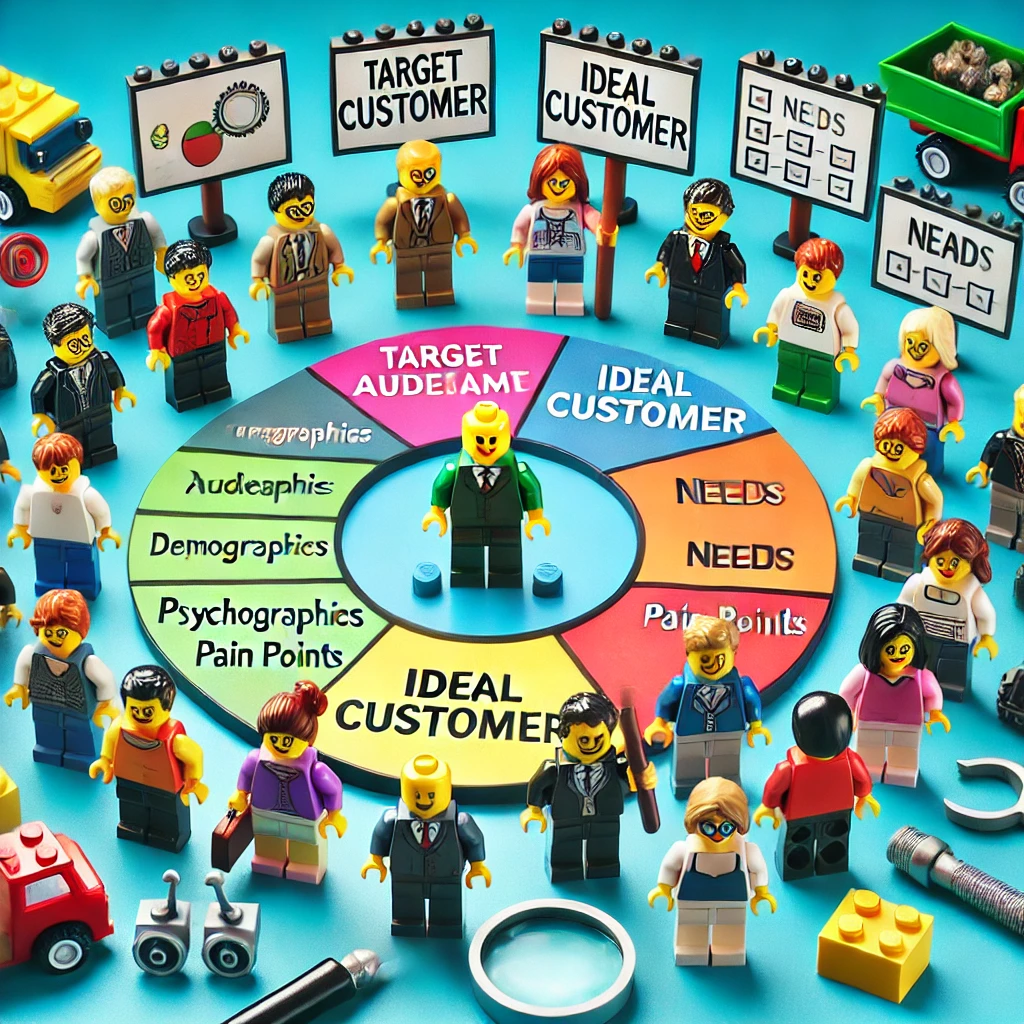La guía definitiva para definir a su cliente ideal

How to Define Your Ideal Customer: A Step-by-Step Guide for Entrepreneurs
Defining your ideal customer is one of the most important steps in building a successful business. Knowing who your target audience is not only helps you create products and services that truly meet their needs, but also improves your marketing and sales efforts, ultimately helping you convert more leads into loyal customers. For entrepreneurs, especially those launching new projects, accurately defining this “ideal customer” can make the difference between business growth and stagnation.
This comprehensive guide walks you through the exact steps needed to identify your ideal customer, including practical tips, essential tools, and how Buska.io can make the process even easier.
1. Why Defining Your Ideal Customer Matters
Before you invest in any marketing strategy, it’s essential to know exactly whom you’re targeting. Without a clear picture of your ideal customer:
- Your messaging can feel scattered or irrelevant.
- Marketing budgets can get wasted reaching people unlikely to buy.
- You may struggle to convert leads, resulting in missed sales.
A well-defined ideal customer profile allows you to make focused, data-driven decisions that resonate with the right audience.
2. Start with the Problem You Solve
The foundation of defining your ideal customer is understanding the problem your product or service solves. Ask yourself:
- What need does my product meet?
- How does it make my customers’ lives easier?
- What specific frustrations or desires does it address?
The clearer you are about the solution you offer, the easier it becomes to identify who will benefit most from it. This clarity helps you zero in on your ideal audience and ensure your messaging addresses their primary concerns.

3. Create Detailed Customer Personas
Creating customer personas allows you to visualize who your ideal customers are, making it easier to tailor your marketing messages. A persona is a fictional representation of a specific segment of your audience, based on research and real data. Key information to include in a persona includes:
- Age, location, and job role
- Income range and purchasing power
- Interests, hobbies, and lifestyle
Example Persona: If you’re marketing a productivity app, one persona could be “Lisa, a 30-year-old remote worker who struggles to stay organized and is looking for ways to boost efficiency.”
Developing multiple personas for different customer segments provides clarity on how to approach each audience.
4. Research and Analyze Competitor Audiences
Take a look at who your competitors are targeting. Competitor analysis can reveal:
- The demographics and interests of their customer base
- How they communicate value in their marketing materials
- Gaps in the market that your product could fill
Social media profiles, blog comments, and customer reviews on competitors’ sites are great resources for understanding the types of people engaging with similar products.
💡 Yes, you can use Buska.io to do this mission too.
5. Use Demographics to Define Key Traits
Demographics are measurable characteristics that help you categorize your ideal customers based on:
- Age: Which age groups would benefit most from your product?
- Gender: Is your product gender-specific or unisex?
- Location: Does your business cater to a local, national, or global audience?
- Income: What is the purchasing power of your ideal customer?
- Education Level: Do you need to tailor your messaging to a specific knowledge level?
For instance, if your business provides a high-end software solution, you may want to target professionals with a high income level and experience in tech-related fields.
6. Dive Deeper with Psychographics
Psychographics take you beyond basic demographics and delve into customer behaviors, motivations, and preferences. Key psychographic data points to consider include:
- Lifestyle: How do they spend their free time?
- Values: What do they care about (e.g., sustainability, innovation)?
- Challenges: What problems or pain points do they frequently face?
- Buying Behavior: Are they motivated by price, quality, or brand loyalty?
Understanding these factors gives you a more holistic view of what drives your customers, allowing for more personalized, effective messaging.
7. Use Social Listening Tools like Buska.io
Social listening is a powerful way to gain real-time insights into your ideal customer’s interests, challenges, and needs. With a platform like Buska.io, you can monitor specific keywords and phrases related to your industry. This lets you spot conversations where potential customers are expressing needs or asking questions that your product or service can solve.
Example Use Case: If someone posts on social media about needing more comfortable home office furniture, Buska.io can alert you, allowing you to reach out with relevant content or a direct response. This proactive approach not only helps you identify your ideal customer but also provides you with a channel to engage them in real time.
Looking for a gaming chair
— Fredo ⛳️ (@MrFredoSix) July 24, 2024
Any recommendations?
8. Engage Directly with Potential Customers
Customer feedback is invaluable. Engage with potential customers directly to gain firsthand insights. Strategies to consider:
- Conducting surveys or interviews to gather insights on their preferences.
- Participating in online forums or communities where they spend time.
- Collecting feedback through social media interactions.
When customers feel heard, it builds trust and increases the likelihood that they’ll convert into loyal clients.
💡 Quick tips : How to monitor LinkedIn with Buska
9. Validate Your Assumptions with Data
After defining who you think your ideal customer is, it’s crucial to validate those assumptions with real data. Data-backed tools and platforms provide objective insights that help you refine your customer profile. Tools that can help with validation include:
- Google Analytics: To understand visitor behavior on your website.
- Facebook and Instagram Insights: To see engagement and demographics data.
- Survey Tools (e.g., SurveyMonkey): To gather direct input from users.
These data points help confirm or adjust your ideal customer profile, enabling you to base your marketing strategy on verified information.
10. Refine and Adapt Over Time
Defining your ideal customer isn’t a one-time task. As your business grows and markets evolve, your target audience may shift. Regularly revisit your customer personas to ensure they accurately reflect the people who are engaging with your brand.
Preguntas frecuentes
1. Why is defining my ideal customer important for my business?
Defining your ideal customer helps you focus your marketing efforts and ensures that you’re reaching people who are most likely to buy from you. This targeted approach saves time, reduces costs, and increases conversion rates.
2. What’s the difference between demographics and psychographics?
Demographics are measurable characteristics like age, gender, and location, while psychographics are more personal attributes, such as values, lifestyle, and motivations. Both are essential for building a comprehensive customer profile.
3. How can Buska.io help me find my ideal customers?
Buska.io uses social listening to alert you when people express a need or interest related to your product. By monitoring relevant keywords, you can discover new leads who match your ideal customer profile in real time.
4. What’s a customer persona, and why should I use one?
A customer persona is a fictional character that represents a segment of your ideal audience. It helps you visualize who your customers are, making it easier to tailor your messaging and product features to their needs.
5. How often should I update my ideal customer profile?
It’s recommended to review your ideal customer profile every six months to a year or whenever you notice changes in market trends or customer feedback. Regular updates keep your marketing strategy relevant.
6. Can I have more than one ideal customer profile?
Yes, many businesses cater to multiple customer segments. Creating separate profiles for each ideal customer type can help you customize your approach to suit each audience group.
